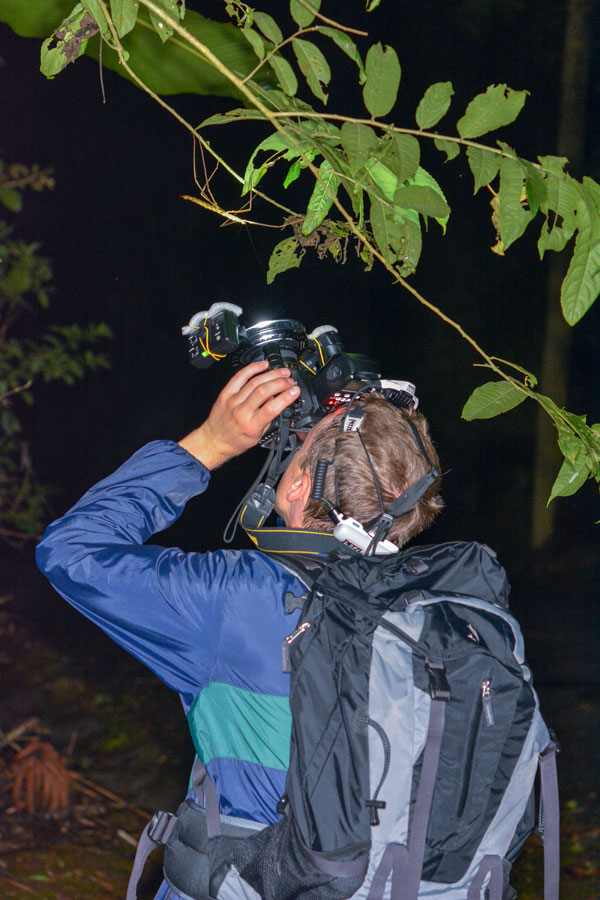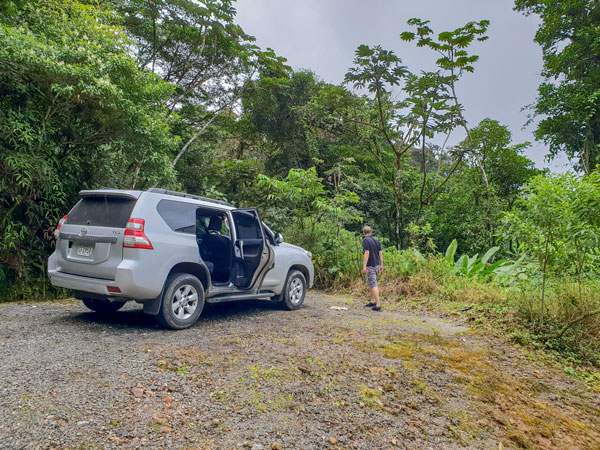Collecting phasmids in the wild

Whoever has worked with phasmids for some time, has observed that his interest in these bizarre insects is constantly increasing. So no wonder that one day the idea arises to find some phasmids out in their natural habitat ourselves. Maybe during a holiday trip or in one’s garden. All too often such “collecting trips” are not less than successful, if not even frustrating. Inexperienced collectors do have the necessary background knowledge and experience with different collecting techniques. Most phasmids cannot be caught with a simple light trap, quite in contrast to many other insect groups. So collecting phasmids can quickly appear to be "difficult", especially when one intends to collect large numbers. And easily one gets the impression that "phasmids are rare and rarely found", while they are probably often just overlooked. With some information and experience, phasmids can be collected from habits and altitudes in very different vegetation zones, from tropical lowland rain forests up to mountain cloud forests.
Please note, that if one intends to take the collected phasmids out of the country it is a prerequisite in many countries to apply for a collecting and export permit before you enter the country. And please also keep in mind that it is our duty as human beings to save and preserve nature.
We strongly condemn collecting methods which apply pesticides ("smoking") in the canopy layers of the rain forests, in order to investigate their biodiversity. While such methods may appear to be productive, the damage caused is immense - and often non-reversible. If strong poisons or pesticides are applied, then it is obvious that not only phasmids will fall from the tree …
The highest density of different phasmids species can be found in tropical regions, even though a few species also occur in cooler regions like in southern Europe or U.S.A. The yellow zone indicates the areas where phasmids can be found.
There is a variety of collecting techniques, and which technique (or combination of techniques) to apply depends on the available resources, the collecting site and the targeted species groups.
Essential equipment

Vehicle: This allows you to invent the surroundings and search for suitable collecting sites independently. In some countries, a car with off-road abilities is needed which can be rented from an international car rental or imported seaways. We have experience that large, international car rentals such as Hertz, Budget, Avis, Europcar, Alamo or Dollar are more reliable and offer qualitatively better cars than smaller, local car rentals do. We dissuade the small Suzuki-, Daihatsu- or Hyundai jeeps, especially if older than ten years. The usage of larger off-road cars such as the Mercedes G-Series, Toyota Land-cruiser, Nissan Patrol or Land-rover is more reliable and much safer, which is an important factor in some countries which possess very high crash rates.
Collecting equipment: High-quality collecting equipment can be obtained from e.g. Bioform or Maier (both in Germany). An extendable handle (at least 3 meters) and a butterfly net with a diameter of 30-50 cm; different plastic containers with a volume of 0.5-5 litres; some large plastic bags or similar for stowing larger species; a pair of latex-glows for handling plants which have irritating bark or sap, etc.
Others:
- Water and some food.
- Some copies of the collecting permit to show the authorities in case they ask.
- Stable but lightweight trekking shoes (Gore-Tex) to prevent yourself from snake bites and other injuries.
- A lightweight raincoat.
- A comfortable, medium-sized rucksack with as many flank bags as possible.
- A stable trekking knife with a length of at least 20 cm and a pair of pruning shears for cutting food plants for the collected insects.
- A hand lamp and batteries.
- A first-aid box (including insect repellent, disinfection spray, etc.).
- A good camera as well as a macro lens or different close-up lenses and a macro flash which is mounted on the camera lens. Batteries for lamps, cameras, flash, etc.
- If you are not very familiar with the area, good maps are also recommended, on paper and also via some apps for smartphones; some apps are useful for taking coordinates as well.
Basic rules when collecting in the wild
- Avoid over-collecting, do not remove more specimens from a habitat than required for scientific investigation.
- Do not collect for profit.
- Avoid causing harm to other animals or plants at all costs.
- Respect the local people´s privacy (don’t collect on private properties without permission).
- Make sure you have trustworthy companions when you go out to collect in the forests, especially at night. In areas where collecting phasmid is productive, medical assistance is usually not available or even far away.
- Wear strong shoes and long trousers, there could be poisonous snakes around and most probably you will encounter leeches, ticks, etc. One can trample loudly to shoo away snakes.
- Before starting to search for phasmids, first, take care of your own safety. For example, you may want to have a look at branches over or near your head (tree-living snakes, scorpions, spiders, wasp’s nests, etc.).
- Inform yourself about necessary vaccinations before leaving for your collecting trip, and get those vaccinations you miss. A good insect repellent is a must!
- Method I. “Direct Collecting”
- Method II. "Canopy"
- Method III. "Light-Trap"
- Method IV. “Tree-Knocking”
- Storage & Transport of Dead Specimens
- Storage & Transport of Livestock